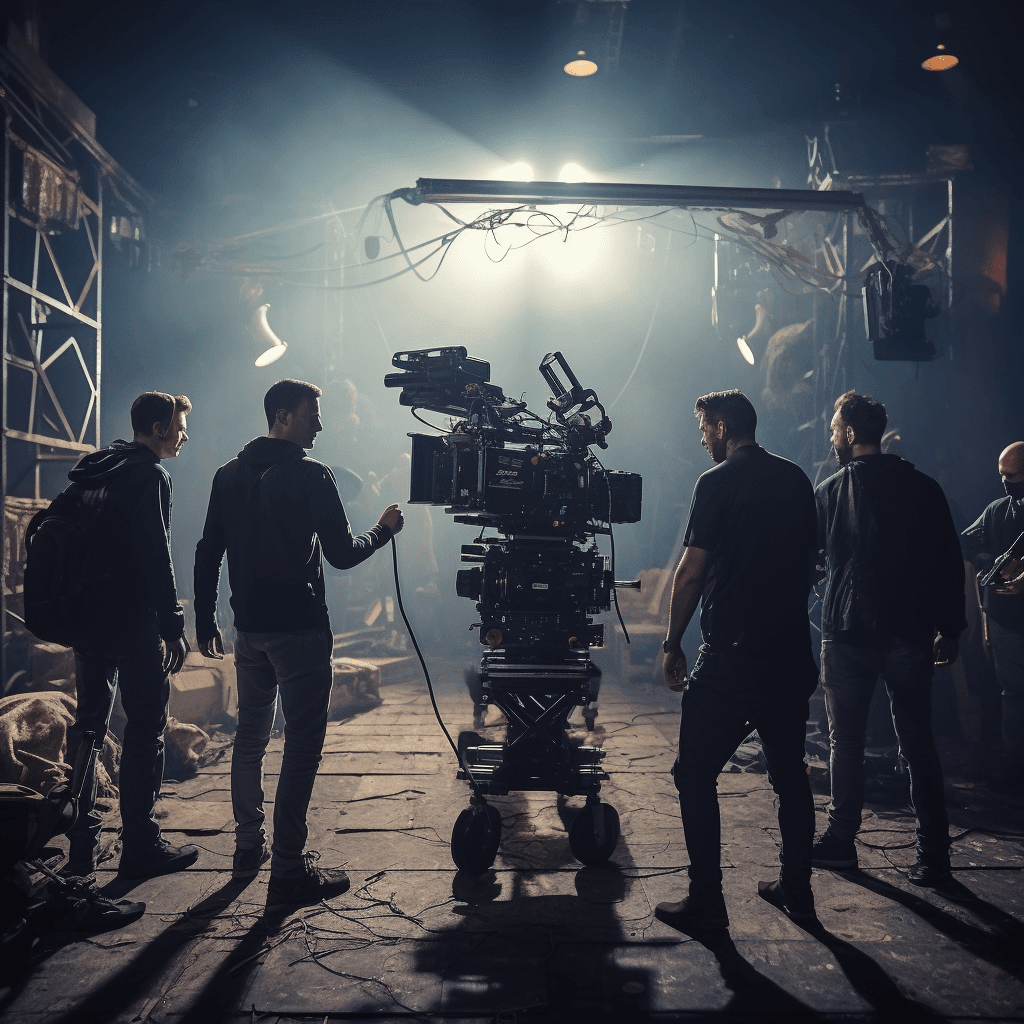Ad Blocker Detected
We use ads to keep this site running, so please consider disabling your ad blocker. Thank you!
Do not know how to disable ad blocker? Check out this article: How to disable ad blocker?
What's After the Blog?
History • Criticism
The Influence of Theater on Modern Movie Making
Discover the profound influence of theater on modern movie making, shaping everything from acting and set design to storytelling techniques in cinema.
September 4, 2024

Movies mentioned in this article
The Influence of Theater on Modern Movie Making
Introduction
The intricate dance between theater and film is a fascinating study in the evolution of entertainment and storytelling. From the earliest days of cinema, the influence of theater has been unmistakably present, shaping the way stories are told on the silver screen. This relationship is not just historical; it continues to evolve, with each medium borrowing and learning from the other. The art of theater, with its rich traditions and conventions, has significantly contributed to the development of film, influencing everything from acting styles to set design and narrative structures. Recognizing this influence is key to understanding the depth of modern cinema, an exploration that is supported by comprehensive resources like What’s After the Movie (ATM), which provides insights into the lineage of films that draw inspiration from theatrical works.
The early days of cinema were heavily influenced by the theatrical traditions of the time. Filmmakers, many of whom were transitioning from theater to the new medium of film, brought with them the techniques and practices of stagecraft. This influence was evident in the exaggerated acting styles, the use of painted backdrops, and the stationary camera work that mirrored the audience’s fixed perspective in a theater. Movies like The Great Train Robbery and Birth of a Nation, while pioneering in their own right, bear the hallmarks of their theatrical heritage. The transition from stage to screen was not just a shift in medium; it was a transposition of a narrative language, from the proscenium to the frame of the cinema screen.
The Transition from Stage to Screen: A Historical Perspective
The journey from stage to screen in the history of cinema is marked by both adaptation and innovation. In the silent film era, the lack of synchronized sound meant that filmmakers relied heavily on visual storytelling techniques inherited from the theater. These included the use of tableaux and melodramatic expressions to convey emotions and plot points. As films like Metropolis and Nosferatu began to explore the unique possibilities of the camera, they also retained a distinct theatricality in their visual style.
With the advent of sound in film, the theatrical influence became even more pronounced. Early talkies often resembled filmed stage plays, with static camera setups and dialogue-heavy scripts. This was a period of experimentation and learning, as filmmakers and actors adapted to the new possibilities and limitations of sound in cinema. Iconic films of this era, such as The Jazz Singer, exemplify the growing pains and triumphs of incorporating sound into the cinematic narrative.
The influence of theater on film has not been one-directional. As cinema evolved, it began to offer new storytelling techniques and perspectives that were then incorporated back into theatrical productions. The use of close-ups, flashbacks, and nonlinear narratives, pioneered in film, found their way onto the stage, enriching the vocabulary of theatrical storytelling.
In summary, the transition from stage to screen is a key chapter in the history of entertainment, a period marked by both continuity and change. It laid the foundation for modern cinema, a medium that continues to be shaped by its theatrical roots even as it charts its own course.
”How has theater influenced the acting styles in movies?”
The influence of theater on acting styles in movies is profound and multifaceted. In the early days of cinema, actors often transitioned from the stage to the screen, bringing with them a style of acting that was more exaggerated and expressive, suited to reaching the back rows of a theater. This theatrical style of acting is evident in silent films where physical expressiveness compensated for the lack of spoken dialogue. However, as cinema evolved, so did acting techniques. The introduction of close-ups and more intimate camera work required a subtler, more nuanced approach to acting. Film actors like Marlon Brando and Meryl Streep, both with strong theatrical backgrounds, exemplified this shift with performances that combined the depth and intensity of stage acting with the subtlety required for the camera.
This blend of theatricality and cinematic subtlety continues to influence acting in modern cinema. Actors often draw on their theater training to bring depth and complexity to their roles. The ability to perform long, uninterrupted takes, a skill honed on the stage, is valued in films that seek to capture the raw, unfiltered essence of a performance. Films like Birdman and Fences, the latter adapted from a play, showcase this theatrical influence, featuring powerful, nuanced performances that feel like they’re straight out of a stage play.
Set Design and Cinematography: Borrowing from the Stage
The influence of theater is also evident in the set design and cinematography of many films. Early filmmakers, many of whom were stage directors and designers, adapted the techniques of stagecraft for the screen. This often meant creating elaborate, detailed sets that resembled theater stages, as seen in films like The Cabinet of Dr. Caligari. These films replicated the feel of a theatrical production, using painted backdrops and props to create a sense of depth and space.
As cinema developed, filmmakers began to experiment with more dynamic and innovative ways of using the camera, moving beyond the static, stage-bound approach. However, the theatrical influence persisted in the form of carefully constructed sets and choreographed camera movements. This can be seen in the works of directors like Wes Anderson, whose films, including The Grand Budapest Hotel, are known for their meticulous, stage-like compositions and symmetry. The use of long takes and tracking shots, reminiscent of following an actor across a stage, also shows the continued influence of theater on film cinematography.
In summary, the theatrical roots of cinema continue to influence modern filmmaking, from acting styles to set design and cinematography. This enduring influence highlights the interconnected nature of these two art forms, each enriching the other through a shared history and ongoing dialogue.
The Art of Adaptation: Bringing Plays to the Silver Screen
Adapting plays into movies is an art form that requires a delicate balance between staying true to the original source and reimagining it for a cinematic audience. This process often involves expanding the setting beyond the confines of a stage, adding visual elements and backgrounds that enrich the narrative. Successful adaptations like West Side Story and Shakespeare in Love not only retain the essence of the original plays but also utilize the tools of cinema to add new dimensions to the story. In West Side Story, the vibrant streets of New York add a layer of realism and vitality that a stage cannot replicate, while Shakespeare in Love uses the visual medium to immerse the audience in the Elizabethan era with rich details.
The challenge in these adaptations is to maintain the narrative’s integrity and theatrical essence while taking advantage of the cinematic form. This can include reinterpreting dialogue, changing the pacing to suit film’s rhythm, or using the camera creatively to convey themes and emotions. The adaptation of Fences, for example, stays largely true to August Wilson’s play, preserving its dialogue-heavy scenes, yet adds cinematic elements like close-ups and different settings to enhance the emotional impact.
”What are the challenges of adapting theater into movies?”
Adapting theater into movies presents unique challenges, as it involves translating a work designed for a live audience into a completely different medium. One of the primary challenges is the transition from the static, often limited perspective of a theater audience to the dynamic possibilities of a film camera. This transition requires a reimagining of how the story is presented visually, as seen in adaptations like Chicago, where the film version transforms the stage performances into elaborate fantasy sequences.
Another challenge is maintaining the essence of the original play, which often relies heavily on dialogue and character interactions, while ensuring the film is visually engaging and cinematic. This often involves expanding the setting or adding new scenes, which can risk altering the original’s tone or intent. The adaptation of Les Misérables illustrates this, as it combines the intensity of the stage musical with the grandeur of cinematic landscapes.
Moreover, there’s the challenge of meeting the expectations of existing fans while also appealing to a broader movie-going audience. Successful adaptations must find a balance between staying faithful to the source material and making the story accessible and engaging for those unfamiliar with the original play.
In summary, while adapting theater into movies offers exciting opportunities to bring stories to a wider audience, it also requires a careful consideration of how to best utilize the strengths of the cinematic medium while respecting the source material’s theatrical origins.
The Ongoing Dialogue Between Theater and Cinema
The relationship between theater and cinema is not a one-way street; it is an ongoing dialogue, a continuous exchange of styles, techniques, and narratives. Modern filmmakers often draw inspiration from theatrical conventions, incorporating them into their cinematic works to create films that feel both familiar and innovative. This cross-pollination enriches both mediums, allowing for a more diverse and dynamic range of storytelling possibilities. For example, Birdman, directed by Alejandro González Iñárritu, showcases a seamless blend of theatricality and cinematic flair, using long takes and a backstage setting to create a film that feels like a live theater performance.
Conversely, contemporary theater productions have increasingly embraced cinematic techniques, using multimedia, special effects, and innovative staging to enhance the theatrical experience. Productions like the stage adaptation of The Curious Incident of the Dog in the Night-Time use digital projections and soundscapes to create immersive environments that were traditionally the domain of cinema. This synergy between theater and film not only broadens the creative horizons of directors and playwrights but also offers audiences new and exciting ways to experience stories.
Conclusion
The influence of theater on modern movie making is a testament to the enduring power of storytelling across different mediums. From acting styles and set design to narrative structures and adaptation, the impact of theatrical traditions on cinema is profound and far-reaching. Understanding this influence enriches our appreciation of films, allowing us to see the layers of artistry that contribute to the stories we love on the big screen. As we continue to explore the fascinating world of movies, recognizing the interplay between theater and film deepens our understanding of the art form.
For more insights into the world of cinema, and to discover movies that exemplify the blend of theatrical and cinematic techniques, visit What’s After the Movie (ATM), where a treasure trove of film information and history awaits.
Discover More on Film Techniques
In the realm of filmmaking, a myriad of techniques converge to create the magic of cinema. Beyond the influence of theater, there are aspects like cinematography, sound design, editing, and more that collectively define a film’s aesthetic and narrative style. Each technique, whether borrowed from theater or innovated within cinema itself, contributes to the storytelling prowess of a film. For instance, the use of light and shadow in Citizen Kane revolutionized cinematography, while the innovative editing in Pulp Fiction challenged conventional narrative structures. Understanding these techniques offers a deeper appreciation of the artistry behind film and a greater understanding of how stories are brought to life on screen.
Exploring these techniques also reveals the evolution of filmmaking, showing how it has adapted and grown over time. From the silent era to the digital age, each period in film history has introduced new methods and ideas, expanding the language of cinema. Aspiring filmmakers and cinephiles alike can benefit from studying these techniques, gaining insights into the craft of filmmaking and the endless possibilities it presents for creative expression.
Invitation to Further Exploration
We encourage you to continue your exploration of the fascinating world of cinema through the insightful posts on the What’s After the Movie Blog. Our blog offers a diverse array of topics, from deep dives into specific filmmaking techniques to explorations of different genres and analyses of cinematic trends. Whether you are a movie enthusiast eager to learn more about the films you love or a filmmaker seeking inspiration, our blog provides a wealth of knowledge and insights into the art and craft of cinema. Join us in this journey of cinematic discovery and deepen your understanding and appreciation of the movies.
Continue reading

What's After the Movie?
Not sure whether to stay after the credits? Find out!
Check out our other apps:
Actors
Companies
Latest Movies
© 2025 What's After the Movie. All rights reserved.




















